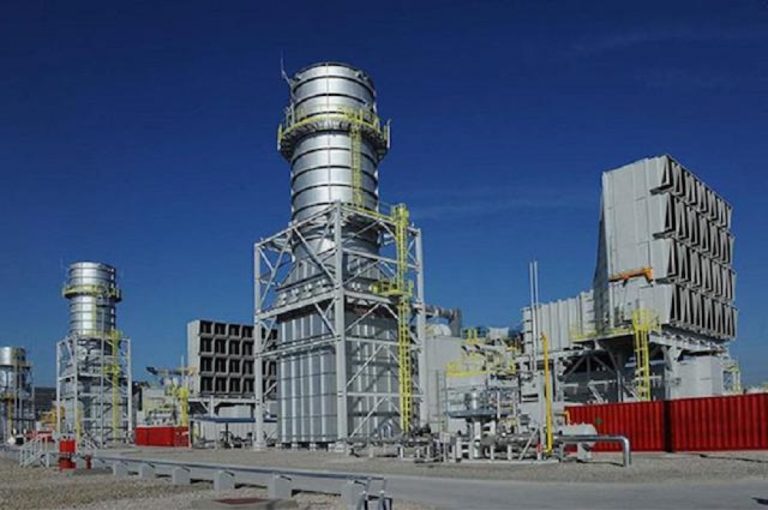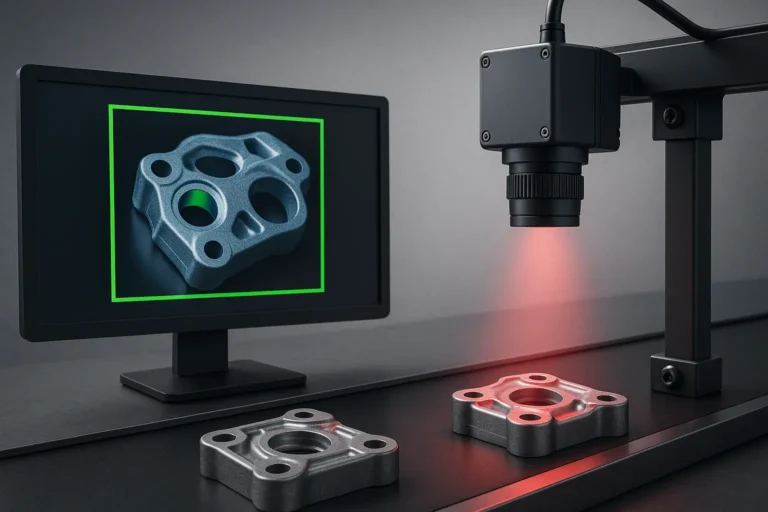What is a Pressure Reducing Station? What Does It Do?
A pressure reducing station is a crucial system used in industrial and utility applications to regulate and control the pressure...
Devamını Oku

Modbus is one of the most widely used communication protocols in automation. Introduced in 1979 by Modicon (now Schneider Electric), it enables seamless data exchange between industrial devices. What is Modbus? At its core, Modbus is an open-source protocol that ensures devices such as Programmable Logic Controllers (PLCs), sensors, actuators, and Human Machine Interfaces (HMIs) communicate effectively.
The simplicity and reliability of Modbus make it a preferred choice for both small-scale systems and large industrial facilities. It facilitates modbus communication by standardizing how data is transmitted, ensuring compatibility among devices from different manufacturers. Modbus is vital in industries that require real-time monitoring and control, making it an integral part of automation for industry.
This protocol supports a variety of network configurations, including serial communication (RS-232 and RS-485) and Ethernet-based networks (TCP/IP). Its flexibility allows it to adapt to different operational requirements, whether for local communication within a facility or remote monitoring via scada system. What does Modbus mean? It represents an effective, open, and versatile communication solution that has stood the test of time in modern automation.
With its easy integration capabilities, Modbus is a cornerstone for systems aiming to optimize processes, enhance reliability, and minimize operational costs.
Modbus is a communication protocol designed to facilitate data exchange between devices in industrial automation systems. It provides a standardized method for devices such as Programmable Logic Controllers (PLCs), sensors, actuators, and Human Machine Interfaces (HMIs) to interact seamlessly. The question what is Modbus can be answered simply as an open and widely accepted protocol that ensures interoperability among different devices.
One of the defining features of Modbus is its simplicity. It uses a master-slave architecture, where a master device communicates with one or more slave devices to send commands and receive data. This ensures that all devices within the system work in harmony. Modbus communication supports both serial communication (RS-232, RS-485) and Ethernet-based networks (Modbus TCP/IP), making it highly adaptable.
The protocol is used extensively in industries requiring real-time data exchange, such as manufacturing, energy management, and infrastructure control. Its ability to integrate devices from various manufacturers without compatibility issues makes it a critical component of automation for industry. What does Modbus mean in this context? It is the foundation of reliable, efficient, and flexible industrial systems.
Modbus operates on a master-slave communication model, ensuring efficient and organized data exchange between devices. In this system, a master device takes control, sending requests to one or more slave devices. Slave devices, in turn, respond by performing the requested actions or providing the necessary data. This straightforward architecture is a key reason for the widespread adoption of Modbus communication.
When the master device sends a request, it includes specific information such as the target slave device’s address, the type of request (e.g., read or write data), and error-checking codes. The addressed slave device processes the request and sends a response containing the requested data or confirmation of action.
The protocol supports two main communication methods:
The efficiency of Modbus communication lies in its simplicity and adaptability, making it a preferred choice for real-time monitoring and control. What does Modbus mean in practical terms? It represents a seamless bridge between industrial devices, ensuring smooth and synchronized operations.
Modbus is widely utilized across various industries due to its simplicity, reliability, and compatibility. Its ability to facilitate seamless communication between devices has made it a cornerstone of modern industrial systems. Below are the primary areas where Modbus plays a critical role:
In essence, what does Modbus mean to these industries? It serves as a universal protocol that streamlines processes, improves efficiency, and ensures reliability in diverse applications.
The Modbus protocol establishes clear rules for communication between devices in an industrial network. It functions on a master-slave model, where the master device initiates communication and controls the data flow, while slave devices respond to the master’s requests. This architecture ensures organized and efficient data exchange.
Here is a step-by-step breakdown of how the Modbus protocol works:
The simplicity and reliability of the Modbus protocol make it a vital tool for real-time monitoring, control, and automation in industrial systems. What does Modbus mean in this context? It’s the framework that ensures devices can exchange data effortlessly and accurately.
The Modbus protocol offers a variety of features that make it a preferred choice in industrial automation system. Its simplicity, reliability, and adaptability to various applications are key factors behind its widespread adoption. Below are the main features of Modbus:
These features highlight why Modbus is integral to automation for industry, providing a reliable foundation for device communication. What is Modbus in practical terms? It’s a versatile, open-source protocol that simplifies and enhances industrial communication.
The Modbus protocol offers different types to accommodate various communication needs and infrastructure setups. Each type is designed to address specific requirements in industrial environments. Here are the primary types of Modbus:
These types of Modbus ensure flexibility, enabling the protocol to be applied in a wide range of industries and scenarios. What does Modbus mean in this context? It signifies a versatile communication solution tailored to the diverse needs of industrial systems.
Modbus RTU (Remote Terminal Unit) is one of the most commonly used types of Modbus for serial communication. It operates on RS-232 and RS-485 connections, transmitting data in a compact, binary format. This efficiency ensures quick and reliable communication in industrial environments.
Each message in Modbus RTU includes a header, data payload, and error-checking codes (CRC), making it both secure and efficient. Its design allows for high-speed data exchange over local networks, making it a preferred choice for automation for industry where reliability and performance are critical.
Modbus ASCII uses a human-readable text format for communication. Messages are framed with start and stop characters, and each byte of data is represented in hexadecimal format. This type is easier to debug compared to RTU, as the messages are more interpretable by humans.
While Modbus ASCII offers simplicity, its text-based structure makes it slower than Modbus RTU. It is best suited for small-scale systems or applications where ease of debugging is a priority.
Modbus TCP/IP operates over Ethernet networks, providing fast and scalable communication capabilities. Unlike serial communication types, it uses IP addresses to identify devices, allowing data packets to travel across large networks.
Modbus TCP/IP is ideal for systems that require remote monitoring and control, such as SCADA systems. Its ability to integrate seamlessly into modern IT infrastructure makes it the most versatile type of Modbus for large-scale industrial environments.
Modbus plays a crucial role in industrial automation system, serving as a reliable and versatile communication protocol. Its ability to connect various devices and systems seamlessly has made it a cornerstone of modern industrial operations. Below are the key reasons why Modbus is vital in the industry:
What does Modbus mean in this context? It represents a foundational tool for achieving efficiency, reliability, and flexibility in industrial environments.
Modbus is a critical protocol in industrial automation, where it facilitates seamless communication between devices such as PLCs, sensors, and actuators. By enabling real-time data exchange, Modbus ensures that production lines operate efficiently and without interruption.
The protocol supports centralized control, allowing operators to monitor and adjust processes from a single interface. Its compatibility with various devices and manufacturers reduces integration challenges, making it a reliable choice for modern automation systems. Modbus plays a key role in optimizing workflows, minimizing downtime, and increasing productivity in industrial environments.
SCADA systems rely on Modbus communication for data acquisition and remote control. Modbus allows SCADA to connect with field devices such as sensors, meters, and actuators, enabling the system to monitor real-time data and execute commands.
The use of Modbus in SCADA systems enhances operational efficiency by providing accurate and timely data for decision-making. It supports both local and remote monitoring, making it ideal for large-scale infrastructure like utilities, energy plants, and industrial facilities. This strong relationship underscores how Modbus protocol serves as a backbone for SCADA-based automation.

A pressure reducing station is a crucial system used in industrial and utility applications to regulate and control the pressure...
Devamını Oku
Image processing systems are technological solutions designed to analyze, interpret, and manipulate digital images using computer-based algorithms. These systems play...
Devamını Oku
RMS stations are essential components in the transmission and distribution of natural gas, designed to ensure safe, efficient, and uninterrupted...
Devamını OkuPROTECTION OF PERSONAL DATA
WEBSITE COOKIE POLICY
Your personal data; It is one of the leading principles of our Organization to protect the privacy of visitors to the website (www.adatech.com.tr) operated by ADATECH as the data controller. This Cookie Usage Policy (“Policy”) explains to all our website visitors and users which types of cookies are used and under what conditions.
Cookies are small text files stored on your device or network server by websites you visit on your computer or mobile device.
They are generally used to provide you with a personalized experience during your use of the website you visit, to improve the services offered and to improve your experience, and may contribute to ease of use while browsing a website. If you do not prefer the use of Cookies, you can delete or block Cookies in your browser settings. However, we would like to remind you that this may affect your use of our website. Unless you change your cookie settings in your browser, we will assume that you accept the use of cookies on this website.
1. WHAT KIND OF DATA IS PROCESSED IN COOKIES?
Cookies on websites, depending on their type, collect data about your browsing and usage preferences on the device you visit the site. This data includes information about the pages you access, the services and products you review, your preferred language option and other preferences.
2. WHAT is a solution and what are its intended uses?
Cookies are small text files that are stored on your device or network server through browsers by websites you visit. These small text files, which contain your preferred language and other settings on the site, help us remember your preferences the next time you visit the site and make improvements to our services to improve your experience on the site. Thus, you can have a better and personalized usage experience on your next visit.
The main purposes of using cookies on our Website are listed below:
3.TYPES OF COOKIES USED ON OUR WEBSITE
3.1. Oturum Çerezleri
Session cookies ensure that the website functions properly during your visit. They are used for purposes such as ensuring the security and continuity of our sites and you during your visit. Session cookies are temporary cookies, they are deleted when you close your browser and come to our site again, they are not permanent.
3.2. Persistent Cookies
These types of cookies are used to remember your preferences and are stored on your device via browsers. Persistent cookies remain stored even after you close your browser or restart your computer from which you visited our site. These cookies are kept in subfolders of your browser until they are deleted through your browser’s settings.
Some types of persistent cookies may be used to provide you with special suggestions, taking into account issues such as your purpose of using the Website.
Thanks to persistent cookies, if you visit our Website again with the same device, it is checked whether there is a cookie created by our Website on your device and if there is, it is understood that you have visited the site before and the content to be transmitted to you is determined accordingly and thus a better service is provided to you.
3.3. Mandatory/Technical Cookies
These cookies are essential for the website you visit to function properly. The purpose of such cookies is to provide necessary services by enabling the website to function. For example, it allows you to access secure parts of the website, to use its features, to navigate on it.
3.4. Analytical Cookies
They collect information about the way the website is used, the frequency and number of visits, and show how visitors navigate to the site. The purpose of using such cookies is to increase performance by improving the way the site functions and to determine the general trend direction. They do not contain data that could enable the identification of visitors. For example, they show the number of error messages displayed or the most visited pages.
3.5. Functional/Functional Cookies
It saves the choices made by the visitor within the site and remembers them on the next visit. The purpose of such cookies is to provide ease of use to visitors. For example, it prevents the site user from re-entering the user password on each page they visit.
3.6. Targeting/Advertising Cookies
They enable the measurement of the effectiveness of advertisements served to visitors and the calculation of the number of times the advertisements are viewed. The purpose of such cookies is to serve ads customized to the interests of visitors.
Likewise, they enable the detection of visitors’ interests specific to their browsing and the presentation of appropriate content. For example, it prevents the advertisement shown to the visitor from being shown again in a short time.
4. HOW TO MANAGE COOKIE PREFERENCES?
To change your preferences regarding the use of cookies or to block or delete cookies, simply change your browser settings.
Many browsers give you the option to accept or reject cookies, accept only certain types of cookies, or be alerted by the browser when a website requests to store cookies on your device so that you can control cookies.
It is also possible to delete cookies previously saved in your browser.
If you disable or refuse cookies, you may need to set some preferences manually, some features and services on the website may not function properly as we will not be able to recognize and associate your account. You can change the settings of your browser by clicking on the relevant link from the table below.
5. ENFORCEMENT OF WEBSITE PRIVACY POLICY
Website Privacy Policy …./…./…./…. . is dated. In case all or certain articles of the Policy are renewed, the effective date of the Policy will be updated. The Privacy Policy is published on the website of the Authority (www.adatech.com.tr) and made available to the relevant persons upon the request of the personal data owners.
ADATECH
Address: Esenyalı Neighborhood Yanyol Street Varyap Plaza No:61-148 Pendik / Istanbul
Telephone: +90 (216 ) 514 80 69
E-mail: [email protected]
Web Address: www.adatech.com.tr